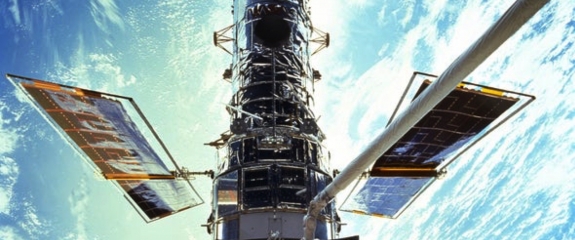30 years of space

Thirty years ago a team of NASA astronauts manoeuvred the Hubble Space Telescope out of a space shuttle’s cargo bay and into low-Earth orbit. No self respecting science organisation, even a clinically based news service like FYI, could let today pass without noting the contribution that Hubble has made to science.
High above our atmosphere, Hubble was intended to study phenomena across the cosmos that ground-based observatories could never hope to see. It was not the first space telescope, but no one would argue that it is by far the longest-lived and most productive. The telescope has transformed astronomy irreversibly, leading not only to profound new discoveries about the universe but also to plans for ever more ambitious space telescopes.
One lesson of the past three decades is that Hubble always surprises us with new and interesting things – wherever it looks. It is a key contributor to the tremendous rate of increase in our knowledge about the universe that we have seen in recent years.
Hubble was engineered to include a lot of built-in redundancy. And it has been visited, repaired and upgraded by astronauts five times throughout its life. Each of those servicing missions rejuvenated the observatory and gave it new capabilities—better electronics, better mechanical components, better detectors, etc. The fact that most of those new additions haven’t failed means that they’re already past their infant mortality phase. It is possible then that they could go another 10 or 15 years. Most of Hubble is reported to be healthy though 30 years in space has taken its toll. Today, Scientific American has created a short film to celebrate the last 30 years of success.


